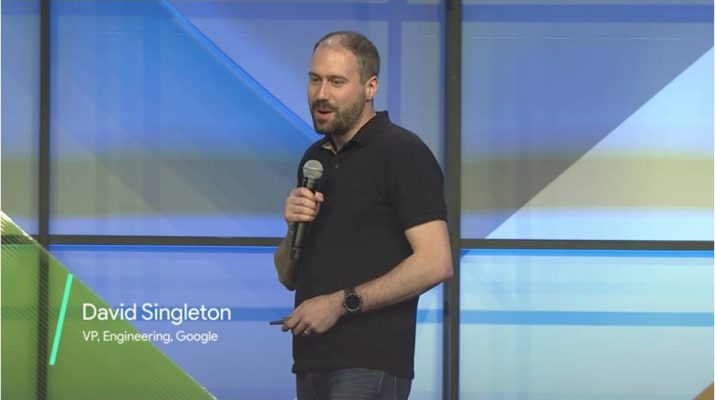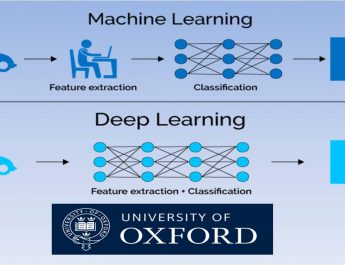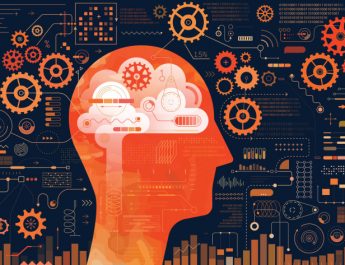David Singleton, VP of Engineering at Google in London, appeared on the Palais stage at Cannes Lions 2017 to deliver a keynote sharing his perspective on the latest developments in machine learning.
Machine learning is making the world we live in smarter, helping us find answers to complex problems ranging from climate change to education. At Google, we’ve been investing in machine learning for some time, and there’s now very little of our technology that doesn’t make use of it. We’ve used these techniques to reinvent existing products such as YouTube and Translate, and to make possible entirely new experiences such as Google Assistant. Beyond Google, other businesses under the Alphabet umbrella are exploring the potential of machine learning and AI to revolutionize cancer detection, combat online trolling and toxic comments, and optimize our use of scarce energy resources.
But first a little history. Although machine learning and AI are receiving a lot of attention and investment right now, they aren’t strictly a new technology. I remember taking a course in Neural Computing when I was at Cambridge in the 1990s, and in fact, the field predates my student days by several decades, with the first statistical models representing the working of the human brain emerging in the 1950s. These early models were highly simplistic, and it’s only recently with the development of neural networks, cloud computing power and the collection of vast datasets, that machine learning has transformed from an interesting collection of theories and algorithms into a set of applied technologies.
At its core, machine learning is an approach to solving problems. During the first computing age, we wrote software that consisted of rules for how to transform a given input into the desired output. Where rule-based systems like this struggle are with the messiness of the real world, which rarely conforms to neat, orderly patterns. Machine learning takes almost the opposite approach, with the algorithm being ‘taught’ to identify its own rules by mining a large set of data for patterns and similarities. In terms of real-world applications, this could look like anything from being able to identify the pictures of cats and dogs from all the photos on your mobile, to optimizing cooling within a data center.
With their capacity to learn from vast sets of data, machine learning and AI are able to solve problems that are way beyond the abilities of any one person or even groups of people. Some of the things that are said about the scope and potential of these technologies can occasionally make them sound quite scary, but really they are just tools amplifying our ability to address bigger and bigger problems. With the assistance of machine learning and AI, our human intelligence, in all of its unpredictability and creativity, will be able to look even further ahead and do even more.
Several teams across Google are exploring machine learning’s potential in creativity, art, and music, but the perhaps best example of what we’re working towards is Google Assistant. Google Assistant is a cross-device AI helper that allows you to enjoy more and do more every day. It learns who you are, what you’re interested in – even the team you support – and then provides meaningful information throughout the day as it’s required. Using machine learning and natural language processing you can have a conversation with the Assistant, exactly as you would with a real person. Already we’re seeing people embrace this, with 70% of requests being voiced in natural language rather than the typical keywords people enter into a search box.
The Assistant is available on more than 100m devices, including Android phones, Google Home, the iPhone, and Android Wear, and it’ll soon be available across many more such as cars and smart TVs. Developers are building apps and actions for Assistant that enable it to go way beyond search, with leading brands such as Spotify, Netflix and eBay investing in the platform. The ability to have one to one conversations with customers is a dream for many brands, and Google Assistant is set to make this a reality through the power of machine learning and AI.
On the topic of conversation, machine learning is also playing a major role in some of the Alphabet’s other businesses. Jigsaw is an Alphabet company staffed by policy experts, engineers, research scientists, and AI specialists, all looking to understand how technology can help make the world a safer place. The team there has huge ambitions to solve global security problems such as online radicalization, the proliferation of fake news, and the threat of online censorship, and their first product, ‘Perspective’, seeks to address one of the biggest issues facing online communities: incivility and toxic comments.
Most users on the internet have witnessed harassment or bullying online, and almost half of internet users have been the target of harassment themselves. Using data sets from partners like the New York Times, the machine learning algorithms behind Perspective have trained themselves to identify the kinds of toxic language that are likely to deter people from joining in the debate. The Perspective API gives publishers a toxicity ‘score’ for each comment, providing them with a reliable and scalable means to monitor and filter conversations, and encourage civil discussion and engagement. As a result of implementing Perspective, the New York Times, which previously only allowed comments on around 10% of its content, is opening up more of its top stories for commentary and reader engagement, with a goal of eventually allowing comments across 100% of their articles.
Outside of the Alphabet family, we’re making some of the fundamental components of our machine learning technology available to businesses and researchers in an effort to help move the entire industry forward. First, we have Google CloudML, a set of APIs that anyone can access to make use of simple machine learning on the Google Cloud. Then we have TensorFlow, our open-source machine learning library that is available for individuals, institutions, and enterprises to use on their own machine learning projects.
These tools have already helped businesses large and small make significant savings on some hugely time-consuming tasks. From automating the sorting of cucumbers in Japanese farms to helping Airbus Defence and Space automatically remove cloud formations from their satellite imagery, TensorFlow and CloudML have already taken over many arduous, complex tasks, freeing up time and mental resources that can then be spent on the kind of imaginative and creative tasks where the human mind excels.
I’m incredibly optimistic about the potential of machine learning. Across the globe, thousands of brilliant, dedicated people are working every day on important problems, from climate change to aerospace to education. With the assistance of machine learning tools, the solutions they’ll be able to find will have the power to make our world a radically better place.
https://www.thinkwithgoogle.com/intl/en-gb/advertising-channels/video/cannes-2017-machine-learning-everyone/




